

To Test Your Fake News Judgment, Play This Game : NPR Ed. Fake news has been on Maggie Farley's mind further back than 2016 when President Trump brought the term into the vernacular.
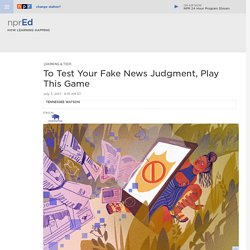
Farley, a veteran journalist, says we've had fake news forever and that "people have always been trying to manipulate information for their own ends," but she calls what we're seeing now "Fake news with a capital F. " In other words, extreme in its ambition for financial gain or political power. "Before, the biggest concern was, 'Are people being confused by opinion; are people being tricked by spin?
' " Now, Farley says, the stakes are much higher. So one day she says an idea came to her: build a game to test users' ability to detect fake news from real. Voilà, Factitious. The game's interface mimics the dating app Tinder, which made swiping famous. Depending on how you swipe, Factitious provides feedback. Stumped? Swipe left for fake news, right for real. Toggle caption Courtesy of American University Game Lab Swipe left for fake news, right for real. How To Read A Book: 3 Strategies For Critical Reading. How To Read A Book: 3 Strategies For Critical Reading by Terry Heick If you’re not familiar with Adler and Van Doren’s How To Read A Book, it is worth, well, reading.
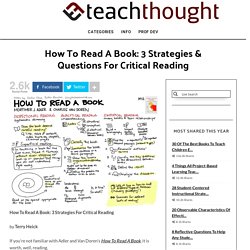
As you might’ve guessed, these have less to do with decoding, and more to do with comprehension. Actually, more to do with the perspective you approach your reading with. It and How To Read And Why by Harold Bloom are two exceptional starting points for (as well as Wendell Berry’s short essay In Defense Of Literacy) fork coming to terms with the idea of critical reading–both the why and the how. Which is where the following sketch note from livinganawesomelife.com comes in. 3 Strategies & Questions For Critical Reading For most of us, reading strategies aren’t new, nor is reading through a critical lens.
Inspectional Reading: Reading with a focus on grasping the book as a “whole thing”–what Adler & Doren call ‘Systematic skimming’ Example question: Why is this book important and/or worth reading? Now go read the book. ; ^ ) Webmapping - Datavisualisations - Open data. How To Cite Social Media In Scholarly Writing. How To Cite Social Media In Research by TeachThought Staff Back in 2012, we shared how to cite a tweet.
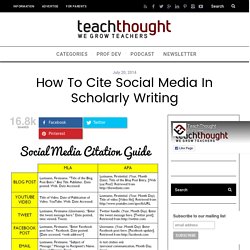
We followed that up with how to cite an app. So when we saw the very useful teachbytes graphic above making some noise on pinterest on several different popular #edtech websites, it reminded us of the constant demands changing technologies place on existing ways we do business. When and in what contexts it makes sense to cite social media content is probably a more relevant post than sharing a graphic that simply shows the format, but they’re both nice to have, yes?
Citation Style Of course, citation style matters, and the two most popular are the APA and MLA. The APA (American Psychological Association) has their rules for citing social media in academic writing. And to an extent, this makes sense. Harvard Business School's Case-Study Method Is Inspiring History Education Reform. In a spacious classroom in Aldrich Hall on the Harvard Business School campus, 100 students are passionately discussing a case called “Battle Over a Bank.”
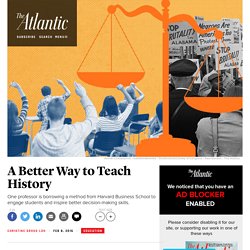
But these aren’t MBA students deliberating over how much the government should regulate the financial sector. This group of mostly undergraduates, guided by the award-winning Harvard Business School professor David Moss, is diving into the fierce 1791 debate over whether the Constitution could be interpreted to allow the fledgling U.S. government the power to form a bank at all. This class, “History of American Democracy,” is no pedestrian historical survey course. It uses the case method—the business school’s signature teaching technique—to immerse undergraduates (as well as a limited number of HBS students) in critical episodes in the development of American democracy. History education generates heated controversy among educators and policymakers.
Few students think about history that way, according to Moss. New York Public Library Makes 180,000 High-Res Images Available Online. "Ferry and river men.
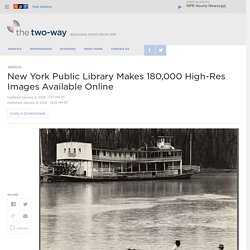
Vicksburg, Mississippi," a 1936 photo by Walker Evans, is one of many images in the NYPL's collection from the Farm Security Administration's Depression-era photography projects. Walker Evans/New York Public Library hide caption toggle caption Walker Evans/New York Public Library "Ferry and river men. Vicksburg, Mississippi," a 1936 photo by Walker Evans, is one of many images in the NYPL's collection from the Farm Security Administration's Depression-era photography projects. Walker Evans/New York Public Library Forget journeys into the stacks or stints at a library scanner: For more and more of the New York Public Library's collections, access is just a click away.
Here’s What We’re NOT Reading.